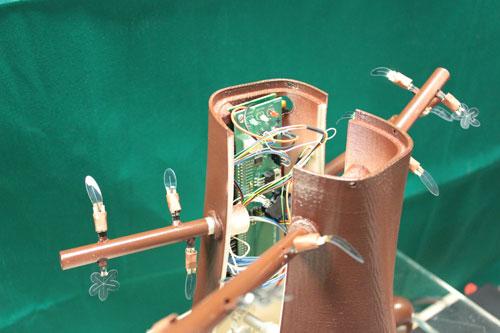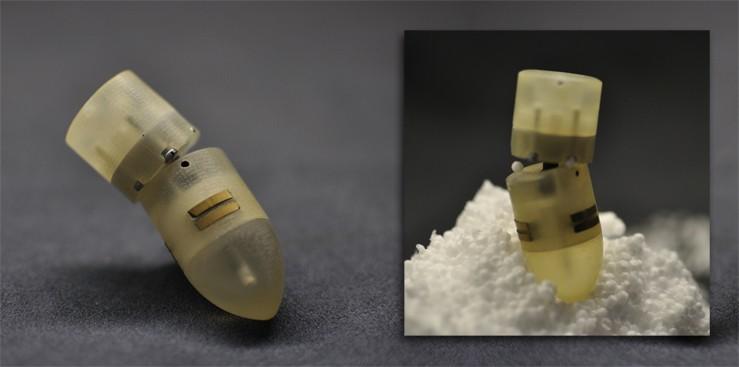Despite the reality of contemporary robotics, humans seem to persist in imagining a future that is at least semi-populated with mechanized, anthropomorphic “beings.” The Sci-Fi genre certainly reflects our greatest aspirations and most abject fears in this respect. From “Metropolis” to “Blade Runner” to “Star Wars,” androids and their antics–whether for the greater good or to our (humans’) potentially collective, violent demise–populate the silver screen, after first having made their debut in literature. The truth is, creating humanoid robots is for the most part unnecessary and even fanciful.
That doesn’t mean that the vast and diverse robotics industry isn’t interested in developing robots that in one way or another possess lifelike attributes and, more importantly, capabilities. The FP7-Plantoid Project is one such example. Researcher Barbara Mazzolai of the Instituto Italiano di Tecnologia (IIT), is the coordinator of a robotics project predicated on the distinctive behavior of another major life form: plants. Funded by Future and Emerging Technologies (FET), a major European Union program to encourage technological research and innovation, the FP7-Plantoid project looks not at animals but at plants for models of adaptability and sustainability.
While we tend to think of plants as generally passive organisms, the project is predicated on the fact that plants not only move but also sense very efficiently. Basically, FP7-Plantoid is developing a plant-like robot that mimics specific plant behaviors or capabilities. The prototype looks something like a tree, with an actual 3D printed trunk from which protrude root-like sensors. One root, explains Mazzolai, “demonstrates bending capabilities.” Like real plants, it basically goes in  search of fertile ground to extend itself and the larger plant it supports. The robot plant has sensors on the end of its roots that allow it to detect gravity, temperature, humidity, the presence of specific organic materials like nitrate and phosphate, and touch.
search of fertile ground to extend itself and the larger plant it supports. The robot plant has sensors on the end of its roots that allow it to detect gravity, temperature, humidity, the presence of specific organic materials like nitrate and phosphate, and touch.
Why touch? If a root runs into an obstacle, then it is redirected, probably for obvious reasons. One aspect of FP7-Plantoid is to program the robot to recognize obstacles such as physical barriers but also toxic or aggressive products. Another component of the project is to provide the “plantoid” with impetus to grow in a certain direction by providing it with material conducive to growth in a particular area in reasonable proximity to the root-sensor.
The roots are connected to a micro-computer that is housed in the 3D printed trunk. Also connected are appendages that approximate the activity of leaves. Their sensors look for similar things like obstacles and chemical factors, but they’re programmed to do the above-ground work of the plantoid.
Currently, the project and its prototype are not being designed and programmed to meet any specific goals beyond the basic development of the plantoid. However, project coordinator, Mazzolai suggests that applications for the robot could potentially involve detection of toxic chemicals in the environment, the monitoring and mapping of soil, space exploration in environments that would prove hostile to animal and plant life, endoscopic robots that could perform delicate surgical procedures, post-natural-disaster search and rescue operations, and more.
The three-year FP7-Plantoid operation is expected to conclude in the spring of 2015, so the last phase of the project is generally being devoted to exploring possible future applications for the plantoid. One aspiration of the research team is to consider how the robots can be used to exploit available environmental energy such as solar energy. It seems likely that future prototypes will also rely on 3D printing to varying degrees as prototypes become standardized and more widely produced. Discuss this story in the 3D Printed Plantoid Robot forum thread at 3DPB.com.
Subscribe to Our Email Newsletter
Stay up-to-date on all the latest news from the 3D printing industry and receive information and offers from third party vendors.
Print Services
Upload your 3D Models and get them printed quickly and efficiently.
You May Also Like
3DPOD 260: John Hart on VulcanForms, MIT, Desktop Metal and More
John Hart is a Professor at MIT; he´s also the director of the Laboratory for Manufacturing and Productivity as well as the director of the Center for Advanced Production Technologies....
Making Space: Stratasys Global Director of Aerospace & Defense Conrad Smith Discusses the Space Supply Chain Council
Of all the many verticals that have been significant additive manufacturing (AM) adopters, few have been more deeply influenced by the incorporation of AM into their workflows than the space...
3DPOD 259: AM at Stratasys with Rich Garrity, Chief Business Unit Officer
Rich Garrity is the Chief Business Officer of Stratasys. Rich shares Stratasys´ vision and future with us. We talk about machines, applications, clients, and the market in general. What technologies...
Stratasys & Automation Intelligence Open North American Tooling Center in Flint
Stratasys has opened the North American Stratasys Tooling Center (NASTC) in Flint, Michigan, together with automation integrator and software firm Automation Intelligence. Stratasys wants the new center to help reduce...



































